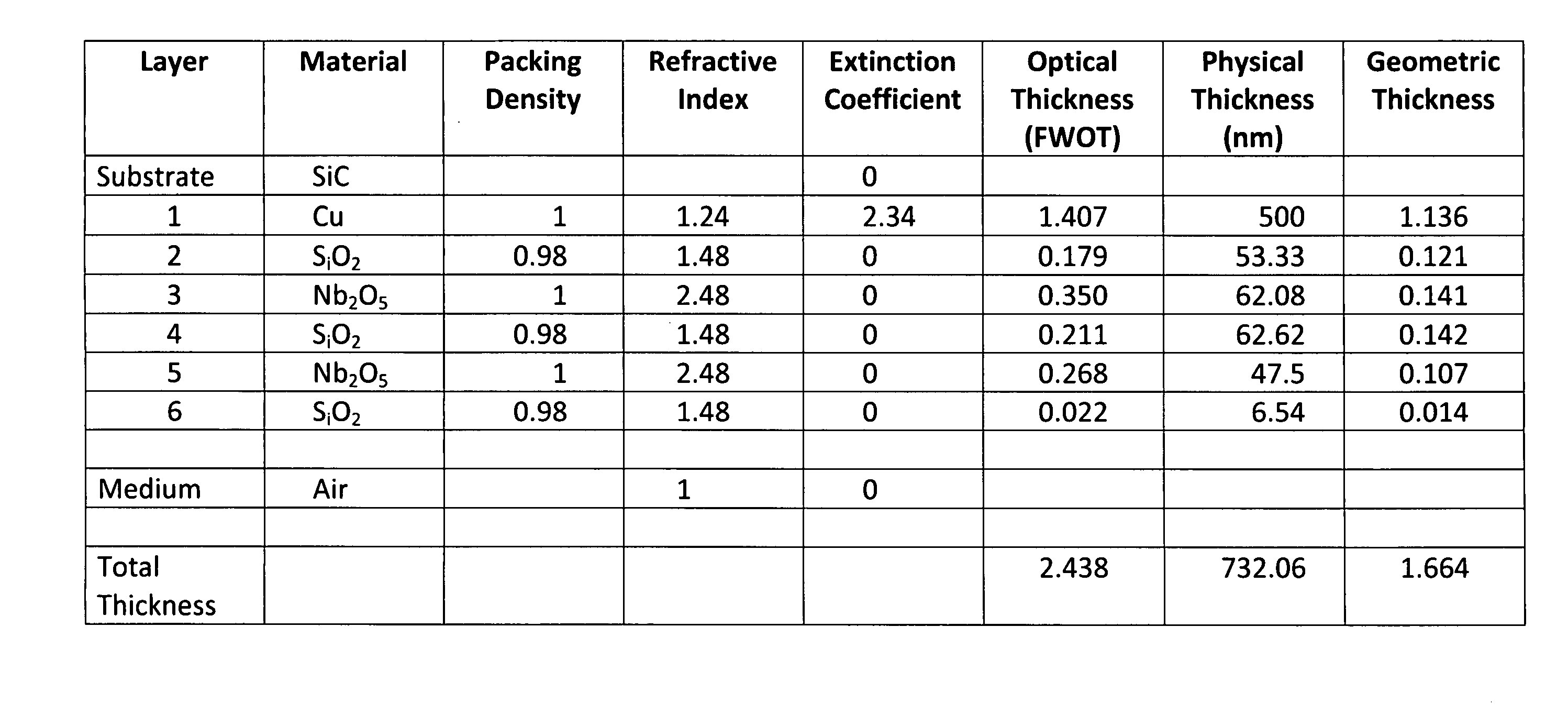Radiation coating for silicon carbide components
- Summary
- Abstract
- Description
- Claims
- Application Information
AI Technical Summary
Benefits of technology
Problems solved by technology
Method used
Image
Examples
Embodiment Construction
[0011]Preferred embodiments of the present invention include silicon carbide mirrors, primary and secondary mirrors coated with a space and nuclear survivable broad-band high reflectivity coating as described in FIG. 1. These mirror samples were prepared in a special chemical vapor deposition process in which tiny particles are injected into the reactor during the deposition process. This process is described in U.S. Pat. No. 5,154,862 which was assigned to Applicant's employer. The resulting silicon carbide is referred to as chemical vapor composite silicon carbide, or CVC-SiC®. As indicated in FIG. 1, the reflective coating includes a 0.5 micron layer of copper deposited directly on the silicon carbide substrate and alternating layers of silicon oxide (SiO2) and niobium oxide (Nb2O5). This embodiment consists of three layers of silicon oxide and two layers of niobium oxide.
[0012]The coatings, including the 0.5 micron copper layer adjacent to the substrate, are x-ray transparent th...
PUM
 Login to View More
Login to View More Abstract
Description
Claims
Application Information
 Login to View More
Login to View More - R&D
- Intellectual Property
- Life Sciences
- Materials
- Tech Scout
- Unparalleled Data Quality
- Higher Quality Content
- 60% Fewer Hallucinations
Browse by: Latest US Patents, China's latest patents, Technical Efficacy Thesaurus, Application Domain, Technology Topic, Popular Technical Reports.
© 2025 PatSnap. All rights reserved.Legal|Privacy policy|Modern Slavery Act Transparency Statement|Sitemap|About US| Contact US: help@patsnap.com


